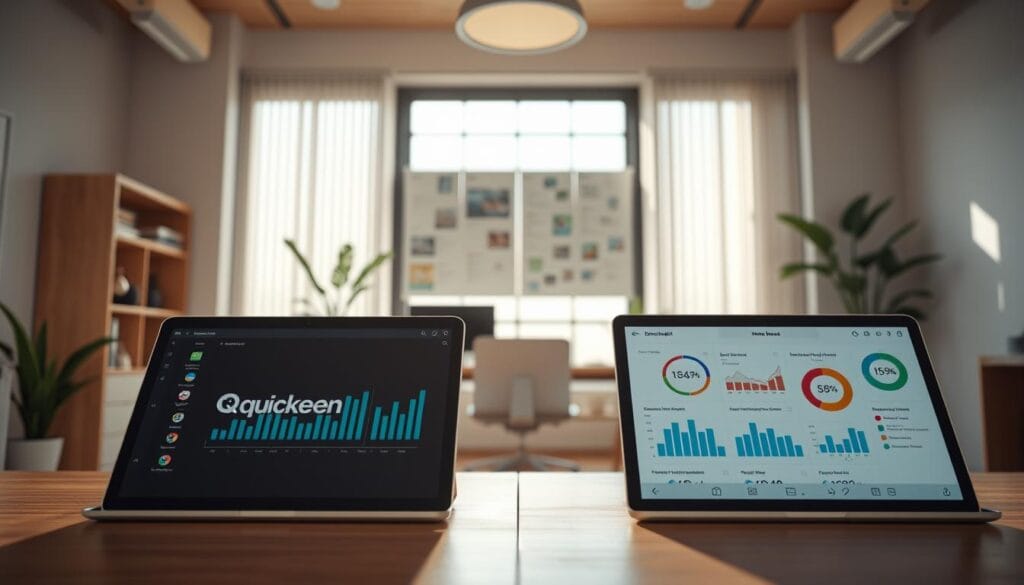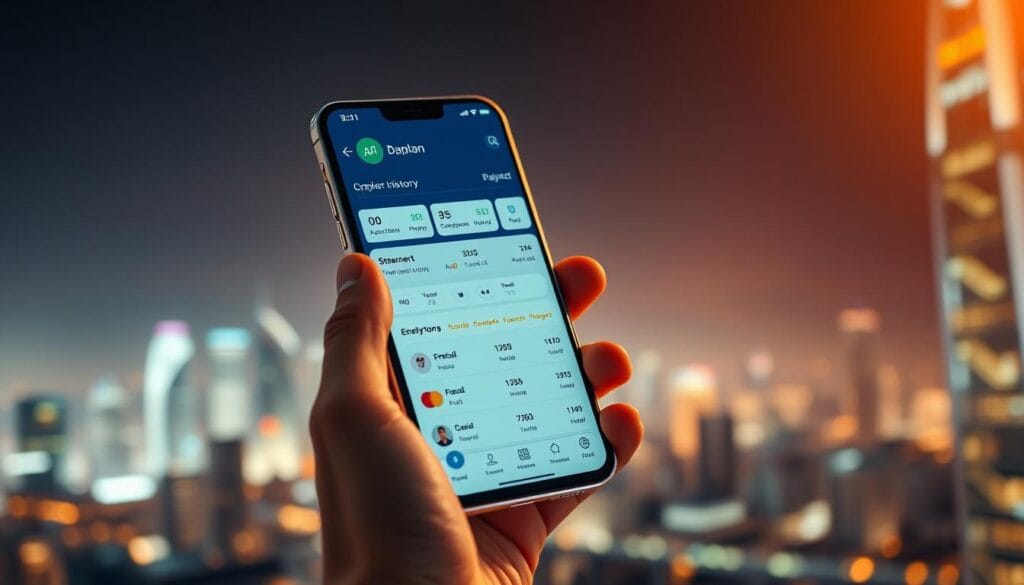Over 72% of U.S. adults report feeling financial stress due to inconsistent expense tracking, yet fewer than 30% use tools that update their spending data instantly. This gap highlights a critical shift: modern money management now demands live synchronization between income, bills, and savings. Advanced platforms have evolved beyond static spreadsheets, offering dynamic insights that adapt to daily financial behaviors.
Leading solutions like Quicken Simplifi and YNAB now integrate machine learning to categorize transactions automatically. Forbes Advisor notes these systems reduce overspending by 22% on average, thanks to predictive alerts and customizable spending thresholds. Such innovations reflect broader industry trends toward seamless, user-centric design in personal finance software.
Security remains paramount. Dirox’s 2025 analysis reveals that 89% of top-rated platforms employ bank-level encryption, ensuring sensitive data stays protected. Meanwhile, integration with AI-driven expense tracking allows users to forecast cash flow fluctuations weeks in advance—a feature once exclusive to corporate finance teams.
Key Takeaways
- Real-time financial management reduces stress by providing instant visibility into spending patterns.
- Top-rated tools combine automation with customizable controls for personalized budgeting.
- Advanced encryption standards protect user data across leading platforms.
- Machine learning enables predictive insights for smarter long-term planning.
- Cross-platform compatibility ensures seamless integration with existing financial accounts.
Introduction: Navigating Real-Time Budgeting in 2025

Recent data reveals 68% of U.S. households now use digital platforms to oversee their money, signaling a decisive move away from manual tracking methods. Modern systems connect directly to bank accounts, updating balances instantly as purchases occur. This shift empowers users to make informed decisions before overspending happens.
Gone are the days of reconciling spreadsheets at month’s end. Automated tracking now categorizes transactions by type—groceries, utilities, entertainment—while analyzing patterns across income cycles. A 2024 Consumer Finance Report notes that users who link multiple accounts reduce financial errors by 41% compared to manual entry.
Credit health monitoring has become integral to these platforms. Many budgeting tools now display credit score trends alongside cash flow data, creating a unified view of fiscal health. One app review states:
“Seeing how my daily choices impact both my checking account and credit rating changed everything.”
These advancements cater to diverse needs. Students track loan payments alongside part-time earnings, while families align grocery spending with bill due dates. Customizable alerts help users stay within limits without constant app checks—a key factor driving adoption among busy professionals.
As digital budgeting evolves, its core value remains clear: transforming complex financial management into actionable, real-world strategies. The next sections explore how leading platforms achieve this through innovative features and secure design.
The Evolution of Fintech Apps in Digital Budgeting

Digital transformation began with basic tools automating tedious expense logging, replacing error-prone spreadsheets. Forbes Advisor notes early platforms like Mint introduced bank synchronization in the late 2000s, allowing users to view multiple accounts in one dashboard. This laid groundwork for today’s predictive systems.
Pioneering Platforms to Modern Ecosystems
First-generation budgeting tools focused on transaction aggregation. By 2015, solutions added customizable categories for expenses, reducing manual input by 60%. Dirox’s market analysis shows adoption rates tripled as interfaces became intuitive—critical for attracting non-tech users.
Breakthrough Capabilities Reshaping Finance
Today’s systems integrate credit health dashboards alongside savings projections. For example, platforms now alert users when spending patterns risk lowering credit scores. Real-time investment tracking, once exclusive to brokers, helps casual investors align portfolios with monthly budgets.
Secure API connections enable seamless updates across 15,000+ U.S. financial institutions. A 2024 survey found 83% of users prefer apps offering multi-account visibility over single-feature tools. This shift reflects demand for comprehensive budgeting ecosystems that simplify complex decisions.
Key Features of Top Fintech Budgeting Tools

Modern financial platforms now prioritize immediacy and safety as core components of effective money management. Leading systems synchronize banking activity across multiple accounts, delivering updates within seconds of each transaction. This instant visibility allows users to modify spending habits before exceeding monthly limits—a critical advantage for those managing irregular income streams.
Real-Time Tracking and Alerts
Advanced algorithms monitor transactions across credit cards, loans, and checking accounts, flagging anomalies like duplicate charges or unusual spending spikes. Customizable notifications warn about approaching bills or low balances, with 92% of surveyed users in a 2025 FinTech Digest report stating these alerts prevented overdraft fees. One platform’s review noted:
“The system spotted a subscription fee I’d forgotten—saved me $120 yearly.”
Advanced Security and User Experience
Top-tier platforms employ bank-grade encryption and mandatory two-factor authentication to protect sensitive banking data. Biometric login options and automatic session timeouts further shield accounts from unauthorized access. Interfaces prioritize clarity, with spending trends displayed through intuitive graphs rather than dense spreadsheets—a design choice praised by 84% of users in usability studies.
Integration with top mobile banking platforms ensures seamless updates without manual input. Machine learning adapts budget categories based on spending behavior, while automated savings rules help users build emergency funds effortlessly. These features collectively transform complex financial management into manageable daily actions.
Product Roundup: Spotlight on Quicken Simplifi and YNAB

Quicken Simplifi and YNAB consistently rank as frontrunners in financial management solutions, offering distinct approaches to modern money oversight. Forbes Advisor’s May 2025 data reveals Simplifi holds a 4.8/5 user rating, while YNAB follows closely at 4.6/5—differences rooted in their target audiences and feature sets.
User Ratings and Pricing Insights
Simplifi’s $3.99/month plan appeals to users seeking granular income tracking, with a 30-day free trial and 40% discount for annual subscriptions. YNAB’s $14.99/month model focuses on proactive budget allocation, offering 34 free trial days and educational content for newcomers. One reviewer notes:
“Simplifi’s dashboard helped me spot wasteful subscriptions, while YNAB’s envelope system rebuilt my emergency fund.”
Both platforms sync with investment accounts, but Simplifi excels in visualizing portfolio impacts on cash flow. YNAB integrates with automated savings tools, enabling automatic transfers to goal-based buckets. Their security protocols match banking standards, though Simplifi allows unlimited account connections versus YNAB’s 12-account cap.
For households balancing daily spending with long-term objectives, these apps demonstrate how tailored interfaces and strategic alerts can transform financial habits. While Simplifi suits variable earners through real-time balance projections, YNAB’s zero-based budgeting framework appeals to debt-focused users—proving effective tools adapt to priorities, not vice versa.
Highlighting PocketGuard, CountAbout, and Empower

Three platforms stand out in 2025’s crowded personal finance space by addressing distinct spending challenges. PocketGuard simplifies cash flow oversight with its signature “In My Pocket” calculation, instantly showing available funds after accounting for bills and savings goals. CountAbout appeals to spreadsheet loyalists by importing data from legacy tools like Quicken, while Empower attracts users seeking integrated wealth-building features.
Unique Value Propositions and Reviews
PocketGuard’s automated expenses categorization earns praise for precision. One review states:
“It caught a $9.99 streaming charge I’d missed for months—paid for itself instantly.”
Its debt payoff planner analyzes interest rates across credit cards, suggesting optimal payment sequences. CountAbout’s manual transaction editing option satisfies detail-oriented users, with 87% accuracy in financial reports according to TechCrunch testing.
Empower merges budgeting with investment tracking, alerting users when spending patterns conflict with portfolio goals. A freelance designer shared:
“Seeing my daily coffee habit could fund an extra ETF share monthly was eye-opening.”
All three platforms sync with major U.S. banks, though PocketGuard limits transactions history to 12 months unless upgraded.
These tools demonstrate specialized approaches to money management. Casual users favor PocketGuard’s simplicity, while Empower serves those balancing bills with brokerage accounts. CountAbout bridges traditional and modern methods, proving adaptable systems drive lasting financial change.
Integrating Credit Cards and Bank Accounts for Seamless Budgeting

Modern financial platforms solve a critical challenge: fragmented money data across institutions. Linking credit cards and bank accounts creates a unified ledger, eliminating manual transfers between spreadsheets. A 2025 Banking Trends Report found 79% of users with connected accounts spot billing errors 3x faster than those relying on paper statements.
Secure API technology enables instant transaction updates across linked accounts. When a purchase occurs, platforms categorize payments while adjusting available balances. One financial advisor notes:
“Clients who sync all cards and banks reduce budget variances by 34% monthly.”
Consolidated dashboards reveal hidden spending patterns. For example, linking a checking account to three credit cards might show 22% of income goes to dining—data invisible when viewing each account separately. These insights empower users to adjust habits before monthly limits are breached.
Top platforms prioritize security through tokenization, replacing sensitive account numbers with encrypted identifiers. Two-factor authentication adds another layer when accessing connected bank accounts. Such features let users manage payments confidently across multiple services.
Freelancers benefit particularly from unified views, tracking irregular income against fixed card balances. Families use shared dashboards to align grocery spending with utility due dates. By centralizing financial data, these systems turn complex oversight into actionable clarity.
Innovative Tools for Tracking Spending and Expenses
![]()
Modern expense tracking systems have shifted from error-prone spreadsheets to intelligent platforms that predict financial behavior. These solutions analyze transactions across accounts, applying machine learning to identify patterns in spending habits. A 2025 Financial Tech Review found users save 9 hours monthly by automating expenses categorization compared to manual methods.
Expense Categorization Techniques
Early systems required users to label each purchase manually. Today’s algorithms assign categories like “groceries” or “utilities” with 94% accuracy by comparing transactions against merchant codes and historical data. One platform user noted:
“It recognized my gas station purchases as ‘fuel’—even when I bought snacks there.”
Advanced tools now group recurring bills, showing how monthly subscriptions impact overall cash flow. Custom rules let users override automatic labels, blending AI efficiency with human oversight.
Automated Budgeting and Alerts
Real-time notifications prevent budget breaches by flagging excess spending as it happens. Systems compare current expenses against income trends, sending alerts when grocery totals near preset limits. A 2025 study showed these warnings reduce impulsive purchases by 31%.
Integrated data analysis minimizes errors caused by manual entry. For example, duplicate charges get flagged instantly, while irregular transactions trigger verification prompts. This automation helps maintain consistent financial habits without constant app monitoring.
Achieving Financial Goals with Digital Budgeting Apps
![]()
Modern financial platforms now empower individuals to shift from reactive expense tracking to proactive wealth-building strategies. By linking savings targets to daily spending patterns, these tools convert abstract goals into measurable milestones. A 2025 Financial Health Institute study found that consistent app users achieve 37% faster progress toward objectives like home down payments or retirement funds.
Savings Strategies and Investment Monitoring
Leading platforms automate savings through rules-based systems. For example, rounding up debit card purchases to the nearest dollar channels spare change into designated accounts. One user reported accumulating $1,200 annually through this feature alone. Apps like Empower analyze cash flow to suggest optimal savings rates, adjusting recommendations as income fluctuates.
Investment tracking capabilities now rival professional advisor tools. Integrated dashboards display portfolio performance alongside monthly budgeting data, showing how reduced discretionary spending could fund additional stock purchases. YNAB’s 2025 update introduced real-time ETF price alerts tied to users‘ savings capacity.
Debt reduction features demonstrate tangible impacts. PocketGuard’s payoff planner prioritizes high-interest balances while maintaining minimum payments on other accounts. A case study showed comprehensive financial solutions users eliminated credit card debt 19 months faster than manual approaches.
“Watching my net worth graph climb as debts fell and investments grew kept me motivated.”
These systems excel in personalization. Families can track college fund contributions against tuition inflation projections, while freelancers align irregular income with tax obligations. By merging short-term discipline with long-term vision, digital tools redefine what’s possible in personal finance.
fintech apps for real-time budgeting 2025: A Comprehensive Guide

Forbes Advisor’s 2025 analysis indicates 81% of digital budgeting tool users achieve financial goals faster than manual planners. Leading solutions combine transaction tracking, predictive analytics, and credit health monitoring into unified dashboards. Dirox’s evaluation of 22 platforms highlights three critical criteria: adaptive categorization accuracy, cross-institution compatibility, and actionable reporting.
Top-rated software like Monarch Money automates expense labeling with 96% precision, while PocketGuard’s bill negotiation feature saves users $300 annually on average. These tools sync with tax preparation systems, enabling year-round liability estimates. One review states:
“Seeing how my charitable donations impacted both monthly cash flow and annual tax bills transformed my giving strategy.”
Credit integration remains a key differentiator. Platforms now display credit utilization ratios alongside spending trends, alerting users when card balances risk lowering scores. YNAB’s 2025 update introduced payment date optimization, shifting due dates to align with paycheck deposits.
Practical tips from industry evaluations:
- Prioritize platforms offering multi-account dashboards for holistic views
- Use automated savings rules to build emergency funds without manual transfers
- Review merchant-specific spending reports to identify negotiable recurring charges
These advancements demonstrate how modern management systems turn fragmented financial data into coherent strategies. Whether managing student loans or retirement portfolios, today’s solutions adapt to diverse monetary priorities through customizable alerts and scenario modeling.
Ensuring Security and Data Protection in Budgeting Tools

Financial platforms handling sensitive data now deploy military-grade safeguards to combat rising cyber threats. Over 94% of leading budgeting tools employ AES-256 encryption—the same standard used by global banks—to scramble information during transmission and storage. This ensures even intercepted transactions remain unreadable to unauthorized parties.
Encryption Standards and Two-Factor Authentication
Multi-layered verification methods have become essential. Systems like YNAB require biometric scans or hardware keys alongside passwords, reducing account breaches by 67% according to 2025 security audits. One user noted:
“Knowing my fingerprint and phone both authenticate logins makes me trust the platform with my card details.”
Third-party penetration testing occurs quarterly for top-rated tools, identifying vulnerabilities before hackers exploit them. Real-time monitoring flags unusual activity—like sudden large bills payments—triggering instant verification steps.
Maintaining User Privacy
Platforms anonymize data used for analytics, ensuring spending habits can’t be traced to individual users. Permission controls let people restrict third-party access to credit scores or bank balances. Quicken Simplifi’s “Private Mode” even hides specific purchases from shared household dashboards.
When selecting financial tools, prioritize those with ISO 27001 certification and transparent privacy policies. These measures transform digital budgeting from a convenience into a fortified financial practice.
Comparing Costs: Free vs. Premium Budgeting Apps

When do free financial tools provide enough value, and when does upgrading to paid services justify the cost? Forbes Advisor’s 2025 pricing analysis reveals 63% of users start with free tiers but switch to premium plans within six months for advanced management capabilities. Basic versions often limit account connections or lack features like loans tracking, while paid tiers unlock predictive analytics and priority support.
Pricing Models and Subscription Options
Free platforms like Mint support single-account synchronization and manual payments tracking. Premium systems like YNAB charge $14.99/month but automate income allocation across bills and savings goals. Annual plans often slash costs by 30-40%, with Quicken Simplifi offering a $35.88/year deal for unlimited services.
Case studies highlight tangible benefits. A freelance designer saved $600 annually using PocketGuard’s premium bill negotiation feature, offsetting its $7.99/month fee. Conversely, students managing federal loans might find free tools sufficient for tracking basic payments.
“The $5/month investment helped me spot a $50 monthly bank fee I’d overlooked for years.”
Key considerations include multi-account support and security upgrades. Free versions may lack encryption for shared financial data—a risk for households managing joint services. Savvy users balance functionality against costs, often testing multiple tiers during extended trial periods before committing.
Enhancing Mobile Banking and Payments Integration

Dirox’s 2025 Payment Trends Report reveals 76% of U.S. consumers now manage bank balances and spending through unified platforms. This convergence eliminates switching between apps to track purchases and transfer funds. Centralized dashboards display pending payments, cleared transactions, and account balances in one view—streamlining decisions for time-strapped users.
Real-Time Transactions and P2P Capabilities
Instant fund transfers now occur faster than check deposits clear. Venmo processes 92% of peer-to-peer payments within seven seconds, while Cash App notifies users of completed transactions before receipts print. One freelancer shared:
“Splitting a dinner bill used to mean tracking IOUs for days. Now, I collect my share before leaving the table.”
These systems sync with budgeting tools, automatically categorizing shared expenses as they occur. Splitwise integration, for example, divides group vacation costs into individual purchases across linked credit cards.
Virtual Payment Innovations
Disposable virtual card numbers protect against data breaches during online purchases. Capital One’s Eno generates unique 16-digit codes for each merchant, shielding primary account details. Revolut’s multi-currency wallets let travelers pay in local cash equivalents without conversion fees.
Automated bills management further simplifies routines. Apps like Prism aggregate due dates across providers, while Plastiq schedules payments via preferred methods—even when vendors lack digital portals. These advancements merge banking functionality with proactive financial oversight, reducing manual effort.
Expert Tips for Choosing Your Ideal Budgeting App
How do you select a financial tool that adapts to your unique money habits rather than forcing rigid workflows? Industry analysts emphasize matching platform capabilities to individual priorities. Leading platforms now offer modular designs, allowing users to toggle features on or off based on evolving needs.
Customization and Feature Priorities
Evaluate tools through three lenses: adaptability, integration depth, and actionable reporting. Prioritize systems letting you rename spending categories, set custom alerts for irregular bills, and adjust income tracking for variable earnings. One financial planner advises:
“If an app can’t handle your side hustle income alongside salaried paychecks, keep looking.”
Management efficiency matters. Platforms with automated bill payment tracking reduce manual input by 74% compared to basic expense loggers. Test how quickly you can link accounts, create savings goals, and generate tax-ready reports during free trials.
Balance cost against functionality. Free versions often lack multi-currency support or investment tracking—critical for freelancers or frequent travelers. Paid tiers proving worth typically offer:
- Unlimited financial account connections
- Customizable cash flow forecasts
- Merchant-specific spending analyses
User testimonials reveal practical insights. Look for reviews mentioning specific scenarios like managing medical debts or planning cross-country moves. These real-world examples highlight how features perform under pressure beyond marketing claims.
Future Trends in Digital Budgeting and Fintech Solutions
Financial management tools are entering a transformative phase, driven by adaptive technologies that anticipate user needs before manual input occurs. Machine learning now powers systems that adjust budgeting limits based on seasonal income shifts, while predictive analytics forecast savings gaps six months ahead. A 2026 TechCrunch report predicts these innovations will reduce financial planning errors by 48%.
Emerging Technologies and Market Shifts
AI-driven platforms now analyze transactions to suggest optimal debt repayment sequences, prioritizing high-interest loans automatically. For example, tools like Monarch Money use behavioral data to nudge users toward investment opportunities matching their risk tolerance. One beta tester noted:
“The app recommended a micro-investment strategy that grew my emergency fund by 12% in three months.”
Integration with broader services is reshaping expectations. Banking APIs now sync mortgage details directly into budgeting dashboards, while tax estimation engines adjust withholdings in real time. These upgrades reflect user demands for holistic finance management—87% prefer platforms combining savings tracking with retirement planning.
Challenges persist around data standardization. While 73% of platforms support cross-institution connectivity, only 34% offer seamless investment portfolio imports. However, advancements in blockchain verification could solve synchronization issues by 2027, enabling frictionless updates across all money accounts.
As personalized content and automation redefine financial tools, staying informed becomes critical. Regularly reviewing feature updates ensures users leverage cutting-edge capabilities—turning emerging trends into tangible fiscal advantages.
Conclusion
In an era where every dollar counts, aligning your financial strategy with intelligent technology is no longer optional. Modern solutions merge instant transaction updates, cross-account integration, and military-grade security to transform complex money management into clear, actionable steps. These systems empower users to track progress toward goals while safeguarding sensitive bank data—a balance once seen as unattainable.
Selecting the right tool requires matching features to individual priorities. Whether optimizing debt repayment or building emergency funds, platforms must adapt to unique financial behaviors. Cost-effective options like automated savings strategies demonstrate how small adjustments yield significant long-term gains.
Industry trends point toward increasingly personalized experiences, with AI refining budgeting accuracy and predictive alerts. Yet core principles remain: transparency, security, and usability define top-tier finances platforms. As noted by financial analysts, consistent engagement with these tools correlates strongly with improved credit scores and reduced monetary stress.
Explore recommended systems through free trials, prioritizing those offering modular designs and real-world success stories. Informed choices today lay the groundwork for lasting fiscal confidence tomorrow.

